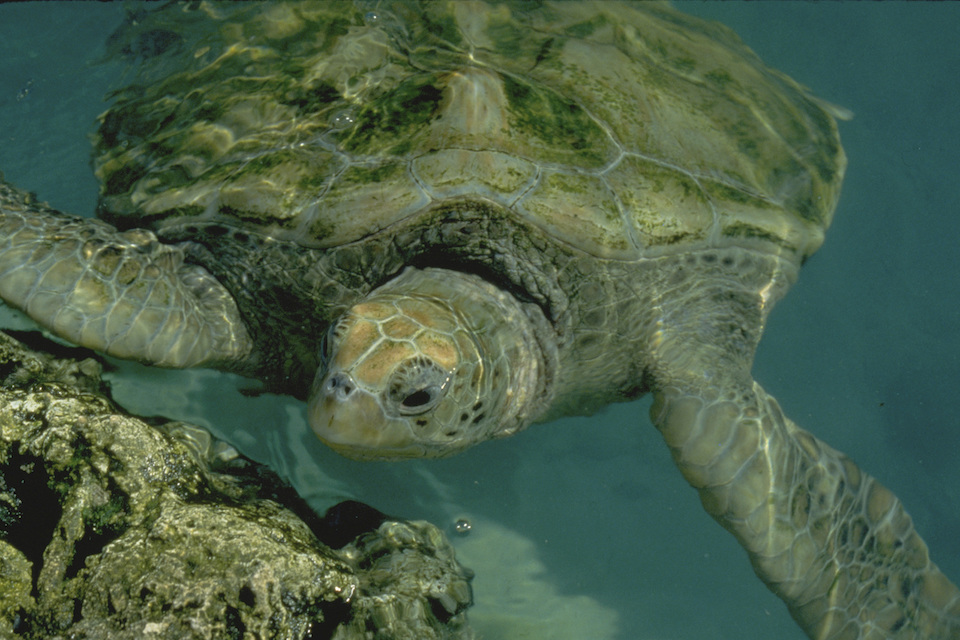By Kemit-Amon Lewis
CJ Contributor
Nesting sea turtles at The Nature Conservancy’s Jack and Isaac Bay Preserve on St. Croix, US Virgin Islands have been monitored since 1994 through beach patrols during nesting season, which occurs primarily in summer and fall.
Since then, we have seen the population recover from about 8 green sea turtles to over 300 in recent years. While we primarily attribute this to the removal of threats, we realize that in order to advance conservation efforts, monitoring must extend beyond the brief period sea turtles are on land.
It is estimated that sea turtles spend over 90 percent of their time navigating the ocean while migrating between foraging, mating and nesting areas. If monitoring only takes place during the short time they are on land, we are missing a large part of their story.
In a quest to learn more about migratory patterns of green sea turtles in the Caribbean, our team of researchers, scientists and volunteers attached satellite transmitters to the shells of four green sea turtles.
The transmitters, which are not harmful to the turtles, allow us to follow the sea turtles’ locations when they swim out to sea. What we didn’t anticipate was how difficult it would be to gently coax a full-grown adult green sea turtle, which can weigh up to 400 pounds and grow up to five feet in length, to remain still for the hour required to carefully apply the tracking device! We worked as a team to guide each turtle into a wooden corral to affix the transmitter without the turtle escaping, compromising the tag, or causing harm to the turtle.
Now, we can track these four turtles – Savannah, Samantha, Dionne and Victoria – on SEATURTLE.ORG and observe their migratory patterns.
We recognized the potential impact that an improved understanding of sea turtle migration could mean for sea turtle conservation across the region and with the support of the National Oceanic and Atmospheric Administration’s Living Marine Resources Cooperative Science Center; Emma Schultz, a Master of Science in Marine Sciences candidate at Savannah State University; the U.S. Virgin Islands Department of Fish and Wildlife; The Nature Conservancy; and many Conservancy volunteers, we were able to bring this idea to life.
As we continue to support the recovery of green sea turtles on St. Croix, satellite tracking will be a key tool. Additional knowledge of sea turtle migratory patterns, including where they travel to forage and mate is beneficial to the enhanced conservation of sea turtles across the Caribbean.
Globally, hundreds of thousands of sea turtles are accidentally caught in fishing nets, hunted for consumption, captured for black market trade, or affected by development and habitat loss every year. By identifying where sea turtle populations come into contact with threats, we can help to conserve these charismatic creatures.
Kemit-Amon Lewis is the Coral Conservation Manager for The Nature Conservancy’s Caribbean Program. He is a St Croix native and a graduate of Savannah State University.
